The Grand Canyon is one of the most beautiful places on earth and the Kolb brothers made it their life’s work to capture it….


The Grand Canyon is home to many different types of whitewater rafts, but the biggest and most memorable boats on the river are the motor rigs. The two types of motor rigs you’ll see or ride on when on a Grand Canyon rafting trip are the S-rig and the J-rig. At Hatch we use S-rigs, so let’s rig one for a trip.
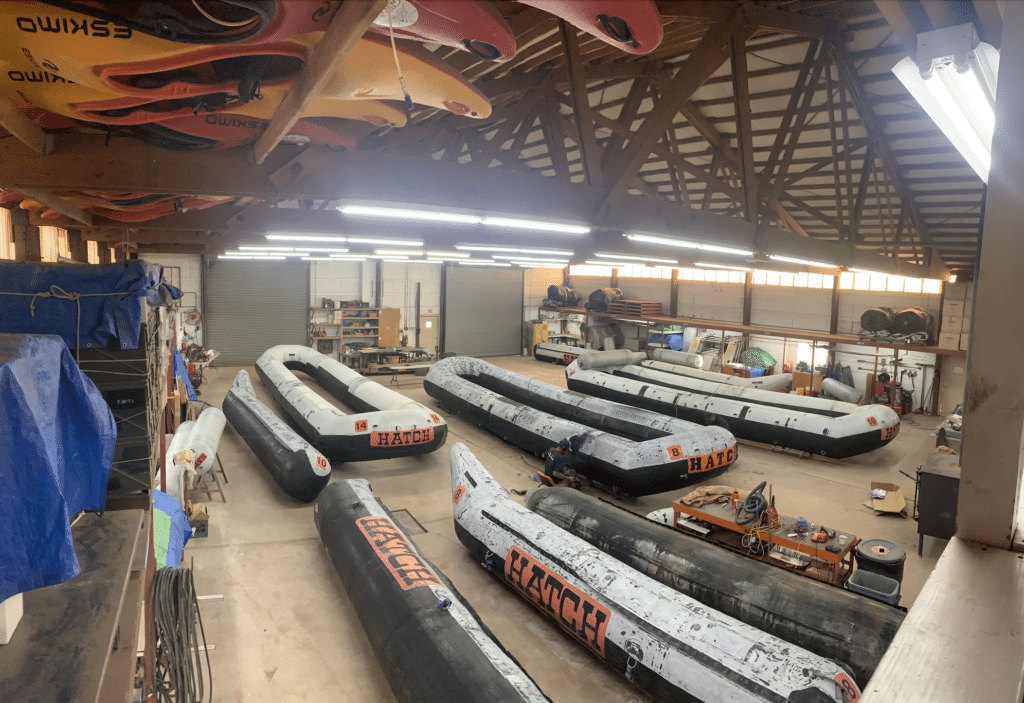
One part of winter work is to sand off the top layer of rubber and then apply a fresh coat for the next river season.
These boats are kind of like lego sets. They can be completely taken apart and rebuilt with mixed and matched pieces. In fact these boats are completely customizable and every company has their own version. Just like when you build a lego set, we are going to start with the base of the boat.
The base of an S-rig is made of a narrow, oval-shaped rubber pontoon (we’ll get to the side tubes later). These pontoons were not always used for whitewater rafting – originally, they had an entirely different purpose! During World War II these pontoons were lashed together to create a temporary floating bridge for tanks to cross rivers; what are now the front and back of the raft were originally the sides of a bridge. In fact, the Colorado River near Yuma, AZ, was a testing ground for the then-new rubber design. After the war the US no longer had use for them, so they sold them for cheap in military surplus stores. That’s where river runners saw them and got the crazy idea to turn them into whitewater rafts. Georgie White was one of the trailblazers for this repurposed use beginning in 1953.
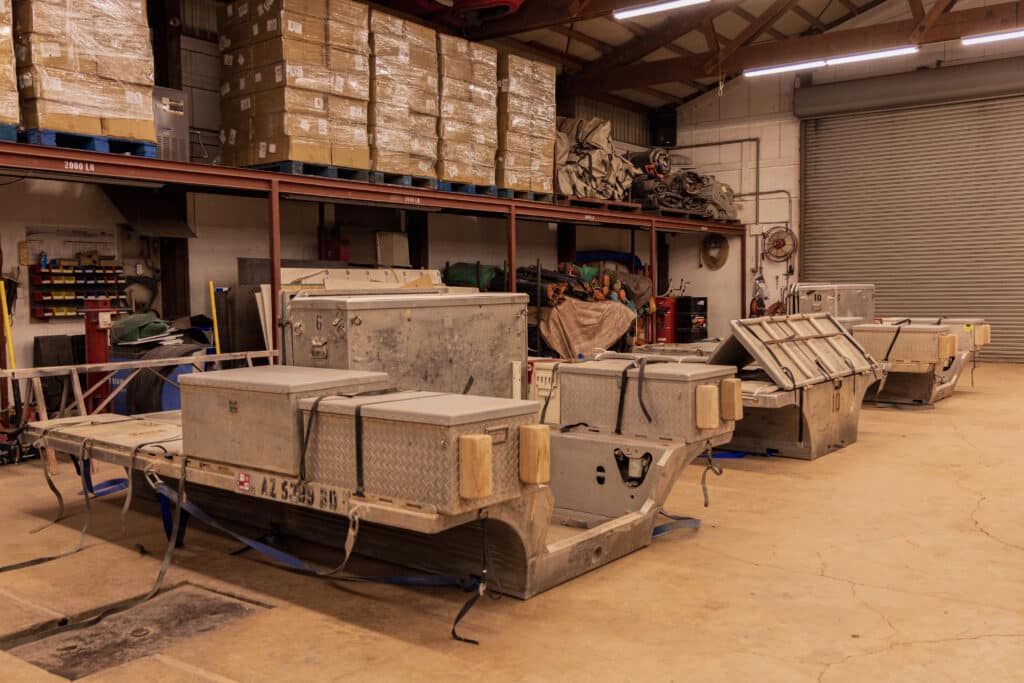
The metal frame for a motorized S-rig raft. This sits between the long sides of a oval pontoon and makes up the “tea room.”
The next step in building an S-rig is the frames. These metal frames fit perfectly into the center of the oval with wings that extend across the tops of both sides of the pontoon. The frame at the front of the boat is called the duffel frame and the frame at the back of the boat is called the motor frame. These frames are then secured to the pontoon with heavy duty straps that wrap around the pontoon and connect back to the frame. Just like everything else on the boat, these straps are also custom. The Hatch family themselves make the straps for every boat.
Once the frames are strapped down it’s time to add all the storage boxes, coolers, and everything else we need to have a successful trip. To make this easier let’s look at a diagram of the setup.
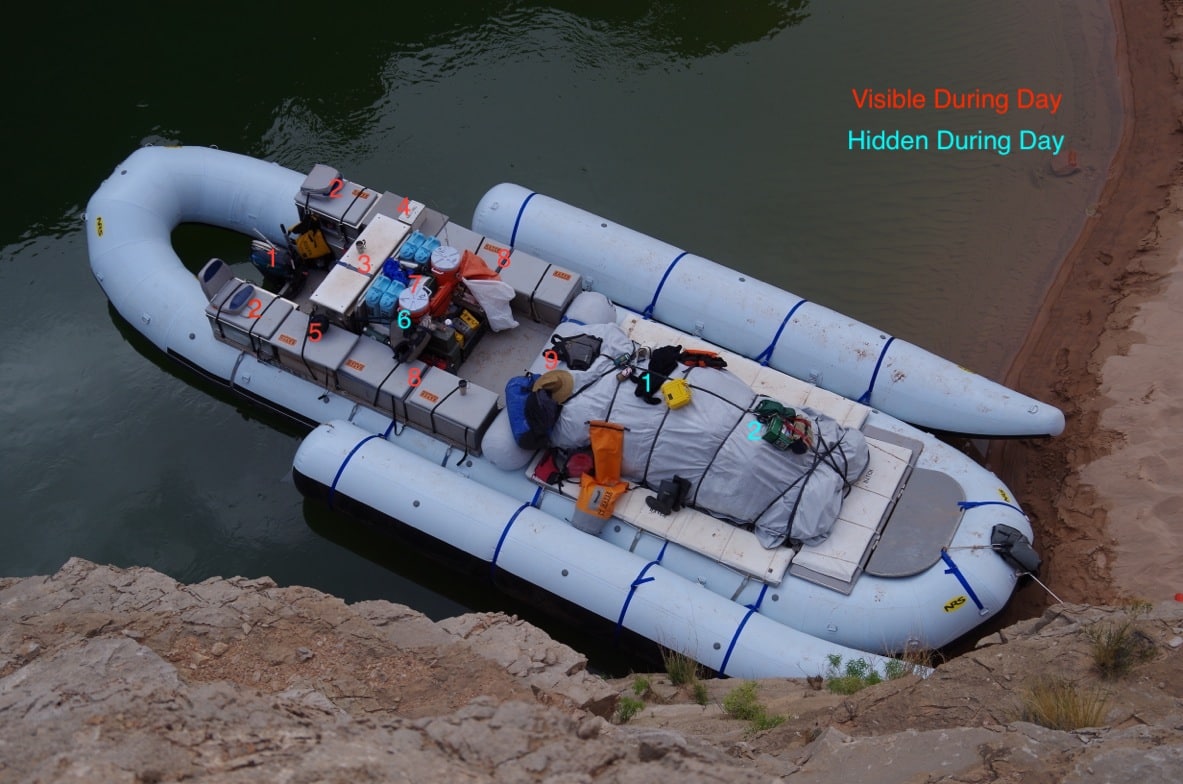
From back to front:
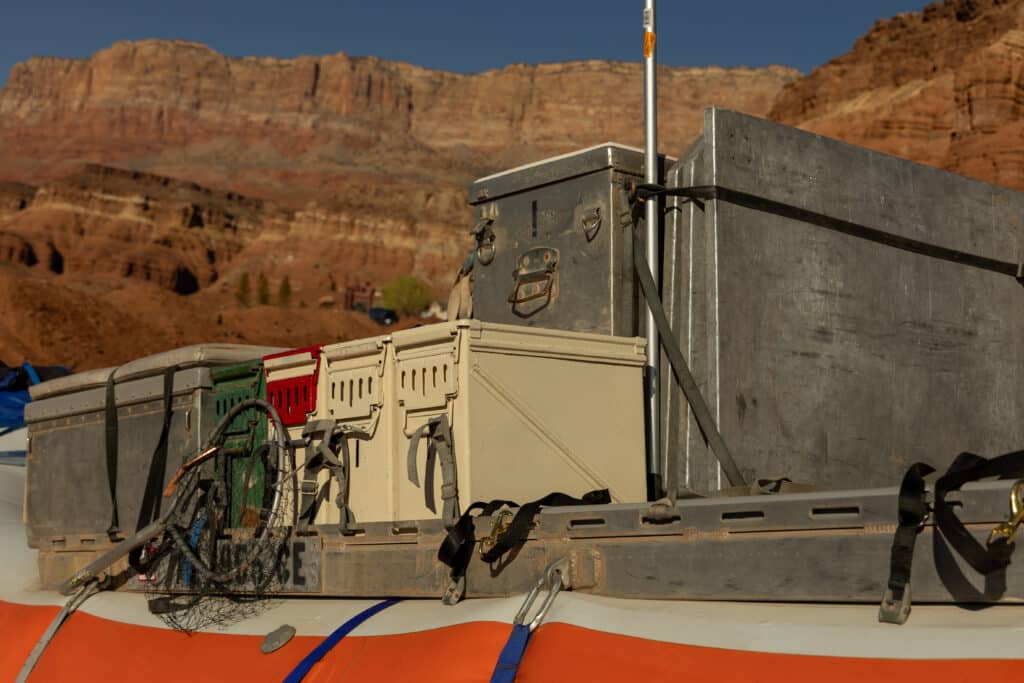
A swamper box, first aid kit ammo can, and motor box on a motorized S-rig ready for a Grand Canyon adventure.
Next let’s look at the duffel frame. Everything listed below is hidden from view during the day by the duffel pile that sits on top of it (these are the blue numbers in the diagram above).
Everything we have done to build and load the boat has been at the warehouse, so now it’s time to take it to the river! The entire rig is hauled down on custom 35′ trailers with rollers. Once the boat is off the trailer and in the water we put on the side tubes. These are long, straight, rubber pontoons that curve upward at the front end. The side tubes are strapped onto the oval pontoon on both sides of the boat. Side tubes make the boat more stable in the rapids and have the added benefit of making it easier for people to stay on the boat. You still need to hold on though!
Once all our stuff is on the boat, it’s time to load all your stuff! Once all your drinks are labeled and your dry bags packed, we load them all on the boat. All your gear will sit on the duffel frame on top of the coolers and hatches. The pile is then covered by a waterproof tarp and strapped down to the boat.
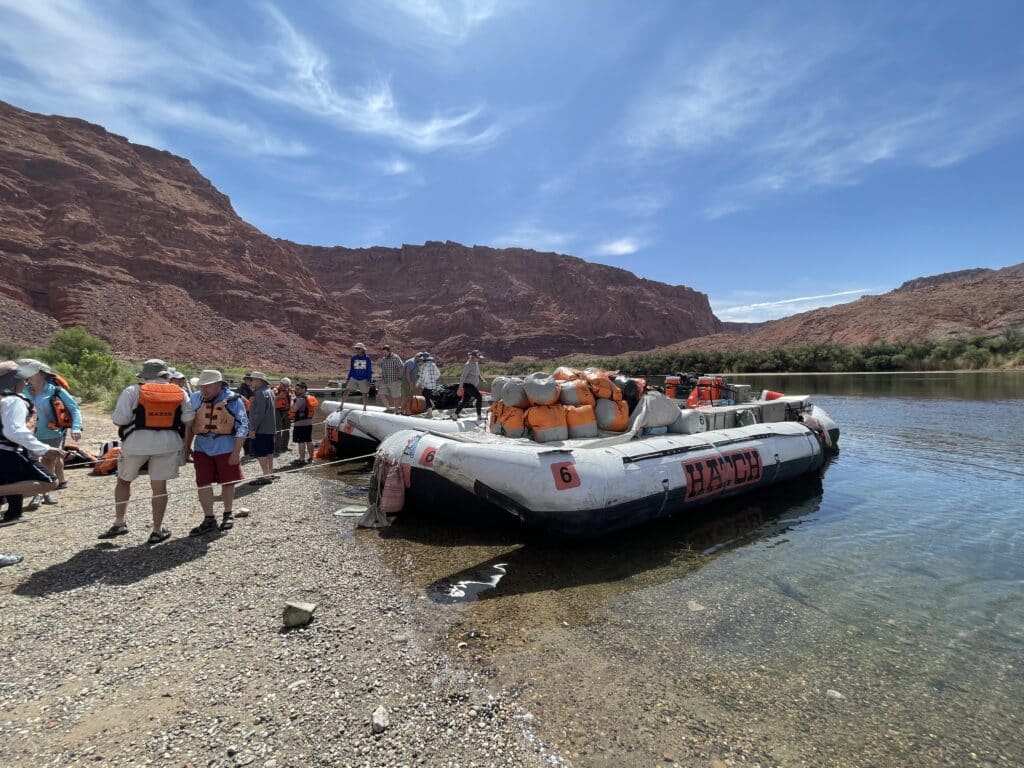
Now the moment you’ve all been waiting for: it’s time for you to get on the boat!
Just like everything else on the boat, you too have a designated spot. Don’t worry, there’s no seating chart, but there are places you can and can’t sit.
Starting at the back of the boat is the motor room. This is where your boatman will be, and your swamper most of the time when they aren’t moving around on the boat. This is behind the motor box. In front of the motor box is the tea room where you can sit on top of the food boxes with your legs towards the inside of the boat. This is the driest place to ride in the boat – you’ll still get wet but maybe not drenched. Next is the boards or the gutter. Alongside both sides of the duffel pile are padded metal boards where you sit with your back against the duffel pile and your feet can rest on the side tubes. These spots can be a splashy ride, but you get a backrest! And finally the best, wettest place to ride on the boat: the bathtub. This is the very front of the boat. Similar to the gutter there is a board that sits across the front of the boat along the duffel pile. Here you are facing all the whitewater action head on! It’s by far the most exciting place to ride – as long as you don’t mind getting soaked! In the heat of summer, that can feel pretty nice though. There are handles in lots of places for the rapids, but on flat water you can choose to sit down and relax or stand up so you can a 360° experience.
Now that the boat is all loaded up it’s time to do a river trip!
Ready to get on a raft yourself? Click here to learn about available motor trips!
In 1935 Eva Hatch and Doris Calder become the first women to raft the Yampa and Green rivers! Here’s what a local newspaper had to say.
Hiking the bright angel trail can be a strenuous endeavor, so many of our guests use our duffel bag service to make the hike just a bit easier!
At Hatch, we don’t only care about running amazing river trips for our guests, we also act as advocates for outdoor recreation throughout the country.